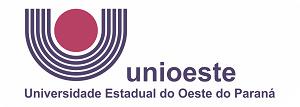Indicadores de sustentabilidade adotados em avaliações de sistemas de manejo de recursos naturais
DOI:
https://doi.org/10.48075/ijerrs.v7i1.34264Resumo
Este artigo apresenta os resultados de uma pesquisa de revisão bibliográfica realizada a partir de dez estudos de caso que utilizaram o método MESMIS - Marco para Avaliação de Sistemas de Manejo de Recursos Naturais Incorporando Indicadores de Sustentabilidade. O objetivo foi avaliar as experiências de vários pesquisadores e identificar os principais indicadores de sustentabilidade adotados em pesquisas sobre sistemas de manejo de recursos naturais. Identificaram-se 174 indicadores, distribuídos nas categorias, 59 ambientais; 53 econômicos; 60 sociais e 2 indicadores de saúde, cada qual buscando compreender características dos agroecossistemas e mercados agroecológicos em várias realidades de países como Brasil, Chile, Colômbia, Itália, Guatemala, México e Uruguai. Percebe-se que não há uma padronização no uso de indicadores, mesmo utilizando o mesmo método. Não há categorização de indicadores padrões para todos os casos, pois cada agroecossistema funciona em localidades diferentes, com ecossistemas diversos e principalmente com culturas diferentes. Com a vasta disposição de indicadores já criados, o estudo contribui para direcionar as futuras pesquisas que adotem o MESMIS como referencial teórico-metodológico, fornecendo elementos teóricos e técnicos para a avaliação da sustentabilidade de sistemas de manejo de recursos naturais.
Downloads
Publicado
Como Citar
Edição
Seção
Licença
Copyright (c) 2025 International Journal of Environmental Resilience Research and Science

Este trabalho está licenciado sob uma licença Creative Commons Attribution-NonCommercial-ShareAlike 4.0 International License.
Aviso de Direito Autoral Creative Commons
Política para Periódicos de Acesso Livre
Autores que publicam nesta revista concordam com os seguintes termos:
1. Autores mantém os direitos autorais e concedem à revista o direito de primeira publicação, com o trabalho simultaneamente licenciado sob a Licença Creative Commons Attribution que permite o compartilhamento do trabalho com reconhecimento da autoria e publicação inicial nesta revista.2. Autores têm autorização para assumir contratos adicionais separadamente, para distribuição não-exclusiva da versão do trabalho publicada nesta revista (ex.: publicar em repositório institucional ou como capítulo de livro), com reconhecimento de autoria e publicação inicial nesta revista.
3. Autores têm permissão e são estimulados a publicar e distribuir seu trabalho online (ex.: em repositórios institucionais ou na sua página pessoal) a qualquer ponto antes ou durante o processo editorial, já que isso pode gerar alterações produtivas, bem como aumentar o impacto e a citação do trabalho publicado (Veja O Efeito do Acesso Livre).
Licença Creative Commons
Esta obra está licenciada com uma Licença Creative Commons Atribuição-NãoComercial-CompartilhaIgual 4.0 Internacional, o que permite compartilhar, copiar, distribuir, exibir, reproduzir, a totalidade ou partes desde que não tenha objetivo comercial e sejam citados os autores e a fonte.









